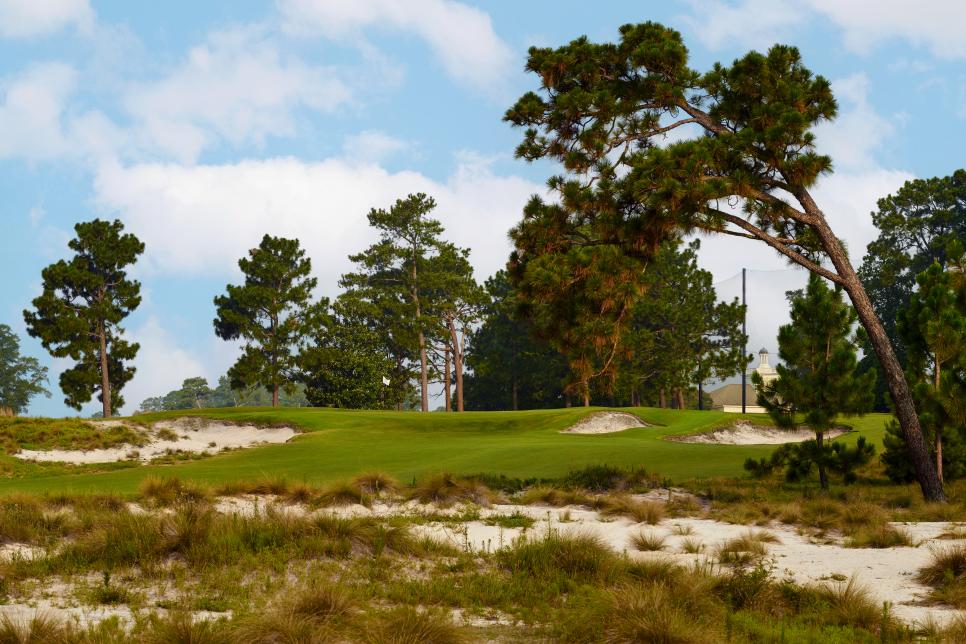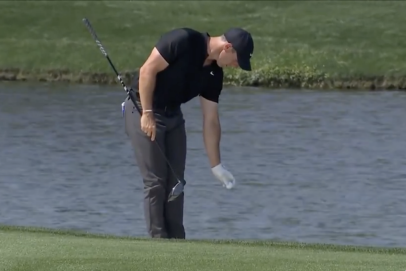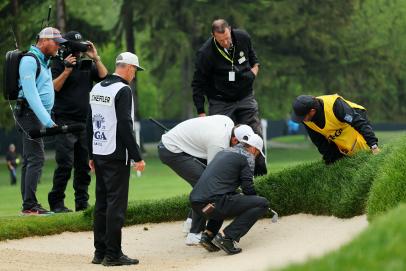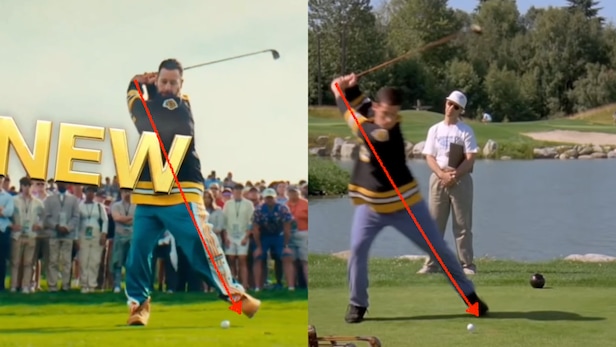Rules of Golf Review: Pinehurst No. 2 sure has a lot of sand. How can you tell if your ball is in a bunker? – Australian Golf Digest

- by Admin
- June 12, 2024

Let’s take a quick trip back to the 2010 PGA Championship. You might recall a “minor” rules incident on the 18th hole at Whistling Straits during Sunday’s final round when Dustin Johnson, in contention to win, was given a two-shot penalty for grounding his club in a bunker. If you don’t remember the incident, you might wonder how a professional golfer could make such a dumb decision.
Well, let’s just say what constituted a “bunker” at Whistling Straits for that tournament and what a bunker looks like just about everywhere else you might play are two very different things. In short, Johnson thought the unmanicured, unremarkable bit of sand his ball was in on 18—trampled over the course of the day/week by spectators—was a waste area and not subject to the rules governing bunkers. What he forgot was that all sandy areas on the course were deemed bunkers and that a notice was posted to remind the tournament field to treat them as such.
Former golfer and TV commentator David Feherty said years later that what happened to Johnson was one of the dumbest decisions in major championship history. We won’t debate it. Just remember that it happened, and it cost DJ the major. And that the PGA of America decided to go in a different direction when it brought the PGA Championship to Kiawah Island in 2021 and deemed through a local rule that there would be no bunkers on the course and everything would be treated as sandy areas.
We bring this up now because this week’s U.S. Open is on a piece of property perhaps even more sandy than Whistling Straits. When you look at the photos of Pinehurst No. 2 in this article, note that some waste areas look like bunkers and some bunkers look like waste areas. Even more confusing, some sandy areas of the course run right up to bunkers. The USGA is NOT playing under any rules that state that all areas are sandy areas, instead going with a mix. So how do you play this course without fear of grounding your club in a bunker, which is a two-shot penalty or loss of hole in match play under Rule 12.2?
First, let’s review the Rules of Golf’s definition of a bunker. It says:
A specially prepared area of sand, which is often a hollow from which turf or soil has been removed. These are not part of a bunker: A lip, wall or face at the edge of a prepared area and consisting of soil, grass, stacked turf or artificial materials; soil or any growing or attached natural object inside the edge of a prepared area (such as grass, bushes or trees); sand that has spilled over or is outside the edge of a prepared area; and all other areas of sand on the course that are not inside the edge of a prepared area (such as deserts and other natural sand areas or areas sometimes referred to as waste areas).
That last part is the key here. The sandy areas of Pinehurst No. 2 that are not groomed (look for rake marks) are considered just another part of the general area of the course, and therefore you can ground your club, make practice swings through them, etc. We asked the USGA to clarify the definition of a bunker for this week’s U.S. Open and this was part of its response:
“As previous U.S. Opens have shown, the question players are mostly likely to ask during play is whether their ball is in a bunker or a ‘waste area.’ We do hope to minimize this by using what is commonly called the Australian method of preparing bunkers, which lowers the chance that a ball can come to rest near the edge where a bunker and a waste area meets. This preparation features smooth and firm conditions towards their edges while only the bunker floor is raked.
“Based on previous U.S. Opens, players are especially interested in understanding how we plan to differentiate between bunkers and waste areas, which is provided to them during registration.”
More From Golf Digest  Rules 101 Rules Review: How can I possibly know ‘exactly’ where my ball crossed into a penalty area?
Rules 101 Rules Review: How can I possibly know ‘exactly’ where my ball crossed into a penalty area?  Rules Are you smart enough to ace this basic Rules quiz?
Rules Are you smart enough to ace this basic Rules quiz?  The Long Game Our company Match Play tournament is the ultimate handicap system stress test
The Long Game Our company Match Play tournament is the ultimate handicap system stress test
Still, you can bet someone this week will call for a rules official and confirm what condition his ball lies in. Can’t hurt to double check.
The USGA is aware of the somewhat unique qualities of No. 2. So much that they prepared a video explaining the rules as it pertains to sand on the course.
MORE GOLF DIGEST RULES REVIEWS
What do I do if my ball just hit another ball on the green?
Can you chip a ball on the tee while waiting for the group ahead of you to play?
I hit myself with my own ball. Is that a penalty anymore?
What exactly is an embedded ball?
I hit a horrible shot. I’m way better off if I don’t find it. Can I just declare it lost?
When does the three-minute search time for a lost ball actually begin?
Does a ball have to be unplayable to declare it unplayable?
I accidentally hit my ball with a practice stroke … does it count?
I’m on the green. My opponent is not. Who’s away?
I bent my putter and it actually works better. Can I still use it?
Somebody just picked up my golf ball! Now what?
This article was originally published on golfdigest.com
The Latest News
-
December 27, 2024‘The champ’s back’: Seven-year first sees Smith join legends amid Nadal comparison
-
December 27, 2024Australian Flying Foxes And Lorikeets Mysteriously ‘Fall From The Sky’: Here’s Why
-
December 27, 2024‘Extremely lucky’: Waugh takes aim over Kohli sanction
-
December 27, 2024Moore Park advocates say consultancy fee nearing $1 million is a double-bogey – Australian Golf Digest
-
December 26, 2024Live: Smith century leads Australia to 474 as fast bowlers eye Indian top order





